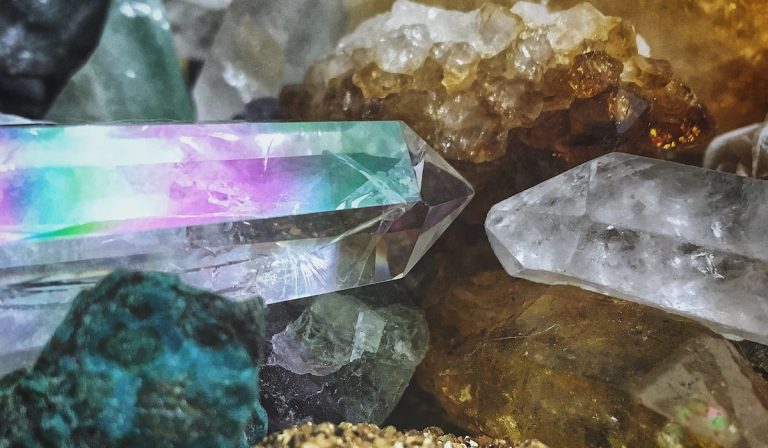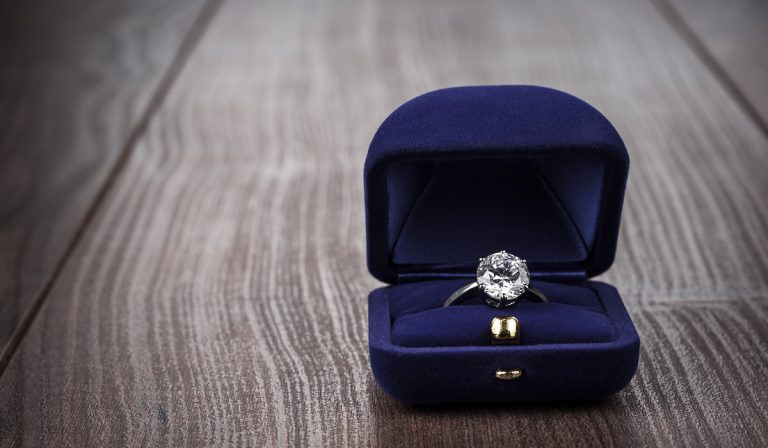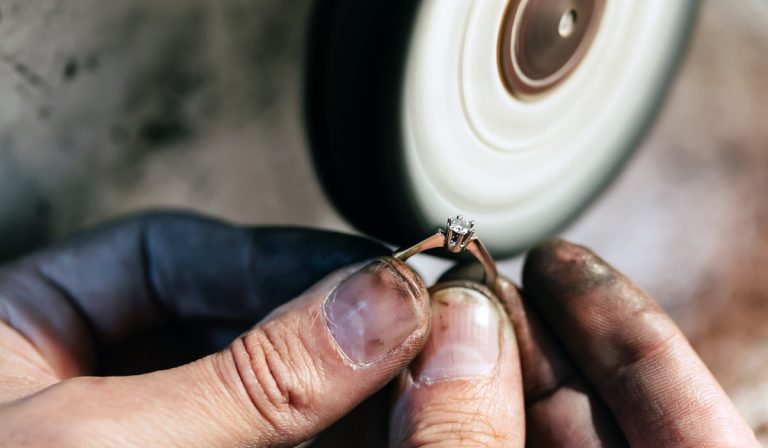Does a Polishing Cloth Remove Gold? (6 Interesting Facts)
Undeniably, polishing cloths help remove tarnish, scratches, dirt, and fingerprints from gold. They even help return the sparkle to gold when it goes dull. But when polishing gold, does the polishing cloth actually remove gold? Let us confirm.
Does a polishing cloth remove gold?
A polishing cloth does indeed remove some gold. However, under ideal polishing conditions, the quantity of gold removed is infinitesimal.
Polishing cloths typically function through abrasion, so as they run over the surface of gold jewelry, they scrape some gold off.
In the rest of this article, we further explain how polishing cloths remove gold. We also go over 6 interesting facts about the use of polishing cloths on gold.
Does a Polishing Cloth Remove Gold?
Polishing cloths do remove gold. However, the degree of such removal is usually dependent on how much pressure you apply while polishing your gold.
Polishing cloths have a mildly abrasive surface, and as you run them across the surface of a piece of gold, they scrape some gold off. Besides being mildly abrasive, polishing cloths are sometimes saturated with rouge – a polishing compound that offers mild abrasion.
The tan-brown or black residue you see on a polishing cloth after polishing is sometimes a mixture of powdered gold and dirt.
Generally, the gold a polishing cloth removes is very minimal. However, if you apply too much pressure while running the fabric across the surface of the gold, it may scrape more gold than usual.
So, when polishing your gold, ensure you do not clean with force. Else, you may wear the external features of the jewelry down quicker.
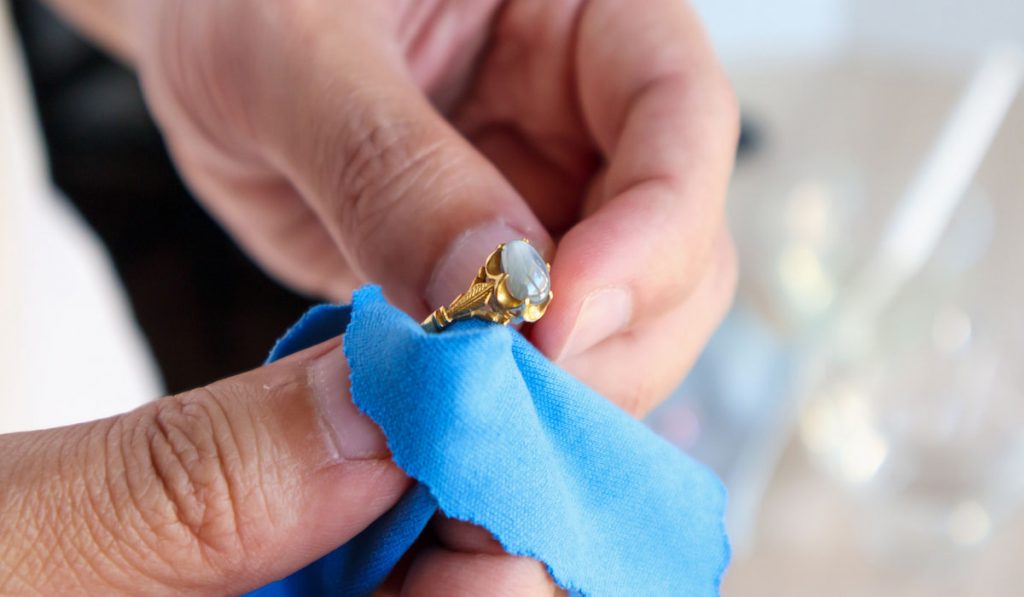
Polishing Cloths Work Through Chemical Dissolution and Abrasion
Polishing cloths work through two main mechanisms: chemical dissolution and abrasion. While some combine both methods, others use only one of them.
Chemical Dissolution
Polishing cloths are typically saturated with a chemical compound, which dissolves dirt, marks, and scratches. This compound also offers some protection to the jewelry.
In many cases, the manufacturers of polishing cloths do not reveal the actual compound they use in their product. However, most of the compounds used are free of ammonia.
While they may not specify the compound used, many manufacturers typically indicate that their compounds are non-toxic.
Abrasion
Besides the cleaning compound, polishing cloths are also infused with jewelers’ rouge.
Jewelers’ rouge is a substance that works through abrasion and grease binding.
It comes in different textures: finely-ground oxide and coarsely-ground oxide. Of course, the coarse variants are more abrasive, so they offer a rougher polish than the finely-ground oxide.
Jewelers’ rouge also comes with different levels of grease binding, depending on the manufacturer. Generally, dry and crumbly rouge offers faster grease binding. However, it typically leaves behind a dusty residue in workspaces.
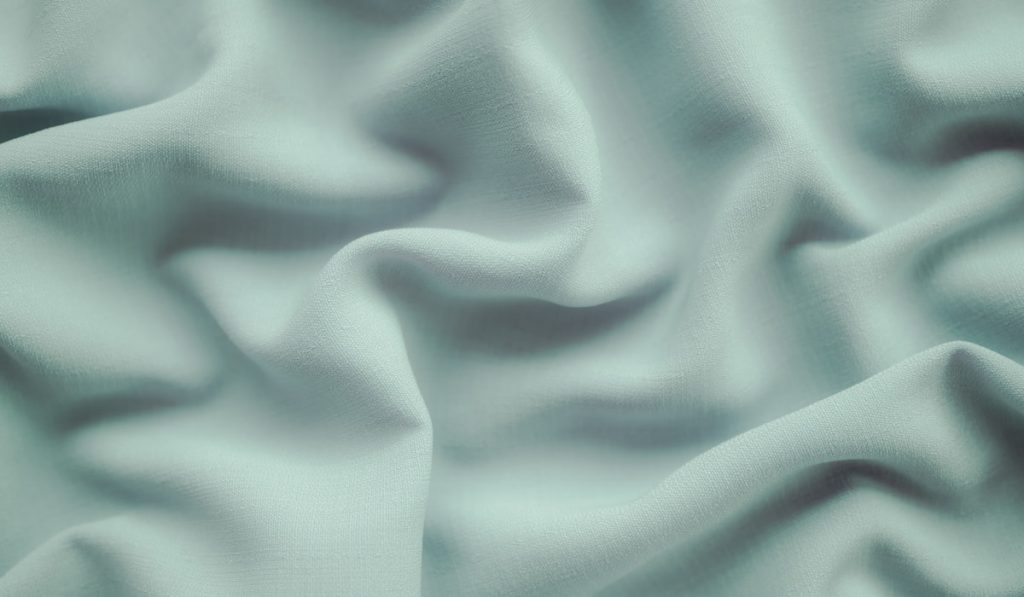
There Are Different Types of Polishing Cloths
Polishing cloths vary depending on the fabric used in making them and the intensity of the polishing they offer.
When it comes to polishing intensity, polishing cloths can either be hard cloths or soft cloths. As you may have guessed, hard cloths are used for rough polishing. But they may also be used for intermediate polishing.
Soft cloths, on the other hand, are used for final polishing. They offer fine polishing, and as expected, they typically have low naps.
Soft cloths are generally more resilient than hard cloths.
When it comes to fabric used, polishing cloths can be:
- Cotton Cloths
- Nylon Cloths
- Alpha-A Cloths
- Alpha-B Cloths
- Selvyt Cloths
- Rayon Cloths
- Multi-Tex Cloths
- Synthetic Velvet Cloths
Not All Types of Jewelers’ Rouges Are Suitable for Gold
As we mentioned before, jewelers’ rouges come with different textures and different levels of grease binding. But beyond that, they also come in various colors.
Not all textures and colors of jewelers’ rouge are suitable for polishing gold. Some colors are too coarse for gold. So, if you use them on your gold, you may damage it.
The following jewelers’ rouges are suitable for polishing gold:
- Blue
- Red
- Brown
- White
Of all colors of jewelers’ rouges, blue has the finest texture. Hence, it is typically used for all types of projects, including polishing gold.
Red is the typical color of jewelers’ rouges. It also has a fine texture, but not as fine as blue rouge. It is typically used on soft metals like gold, nickel, copper, and silver.
While white rouge is coarser than red rouge, it can also be used on precious metals like gold.
Brown is perhaps the coarsest of the rouges we listed, but you can still use it on soft metals like platinum and gold.
The following jewelers’ rouges are not suitable for polishing gold:
- Black
- Green
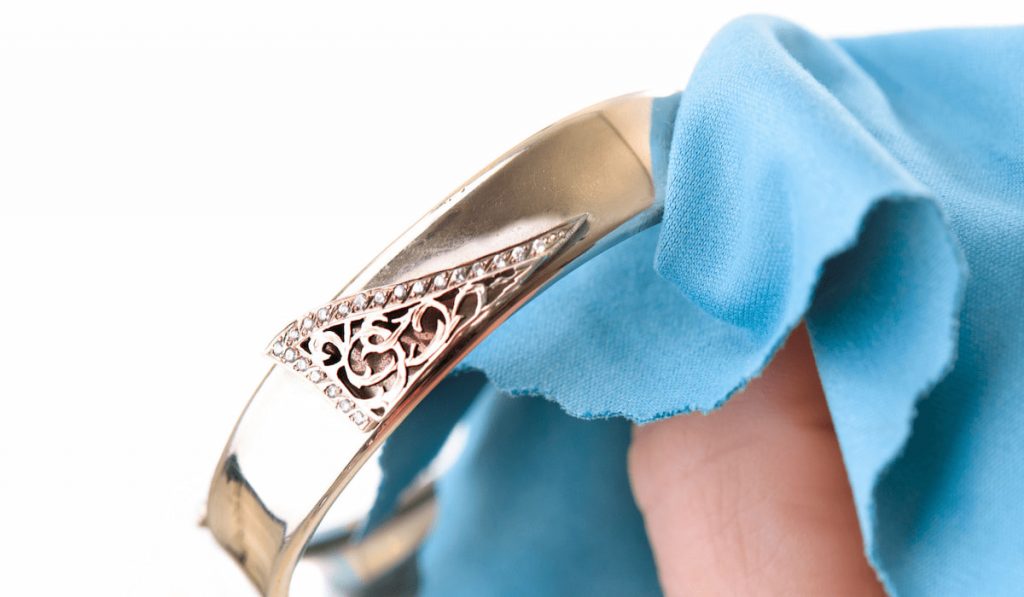
Polishing Cloths May Not Be Effective for Deep Dings and Dents
While polishing cloths can help you even out shallow scratches, it may not work for deep dings and dents. In such cases, you will have to take the jewelry to a jeweler. The jeweler will help you fix the flaw by filling and polishing it.
Interchanging Polishing Cloths Across Jewelry Metals Is Risky
As you may have inferred from all we have said, using a polishing cloth meant for one jewelry metal on another is dicey.
For one, the texture of the material and the rouge used may differ significantly. For instance, while platinum polishing cloth can be infused with green rouge, gold polishing cloths must not be impregnated with such. So, if you try to clean your gold with a platinum polishing cloth, you just might damage it.
Resources
- https://www.jewelry-secrets.com/Blog/jewelry-polishing-cloths
- https://www.reddit.com/r/explainlikeimfive/comments/dkm37l/elif_how_do_gold_polishing_cloths_work
- https://www.afashionblog.com/difference-between-gold-and-silver-polishing-cloths
- https://www.afashionblog.com/gold-polishing-cloth
- https://www.cooksongold.com/blog/learn/what-is-jewellers-rouge
- https://www.tedpella.com/Material-Sciences_html/Polishing_Cloths
- https://www.ehow.com/info_8266409_jewelers-rouge-colors
- https://www.findingking.com/t-InstructionsJewelersRougeandPolishingcompounds


